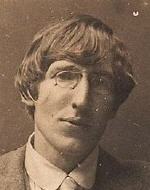
Norwegian modernist painter Nikolai Astrup was born in Kalvåg. In 1899, Astrup left for Kristiania (now Oslo) where he matriculated as student at the Royal Academy of Design. Astrup quickly left to join Harriet Backer’s painting school where he studied until 1901. Astrup lived in Paris where he studied at the Académie Julian. He was a student of Christian Krohg at Académie Colarossi from 1901-02. Astrup later traveled to Berlin, Dresden, Munich, and Hamburg. By 1902, he had returned to and settled in Jøster. In 1911, Astrup studied under Lovis Corinth in Berlin at Arthur Lewin-Funcke’s school of Painting.
Astrup preferred clear, strong colors and usually made landscape art depicting his surroundings in Jølster. His paintings describe an intimate interaction between nature and the developed environment, characterized by bold lines and distinctive rich color. Astrup is regarded as a neo-romantic painter, but he also worked with woodcuts.